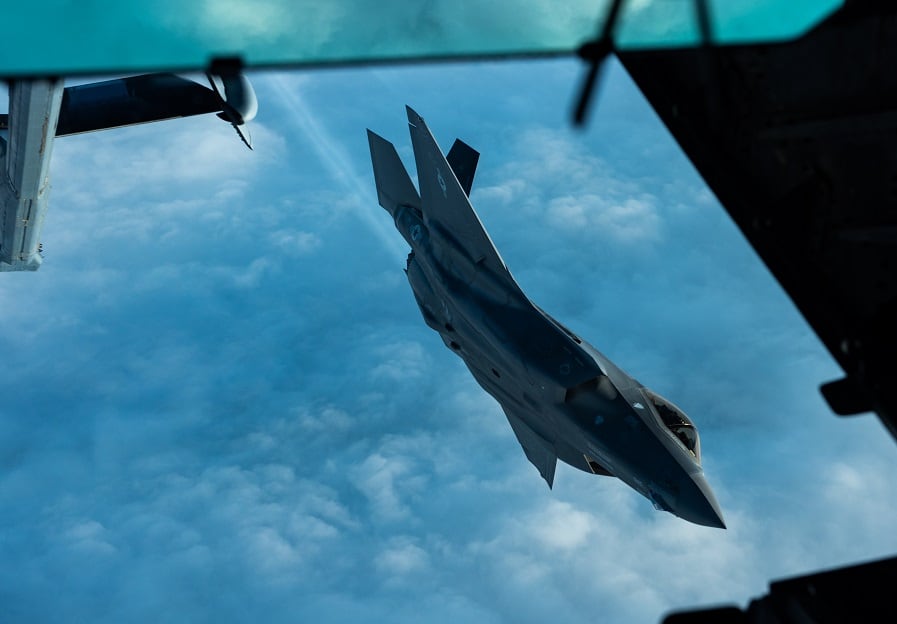NATIONAL HARBOR, Md. — Creating a Space Force will cost a total of $13 billion over the next five years, including an initial $3 billion cost to stand up the service, the Air Force estimates.
In a Sept. 14 memo obtained by Defense News and signed by Air Force Secretary Heather Wilson, the service laid out its proposal to transition its space functions to a sixth branch of the military known as the Space Force.
Notably, the Air Force’s Space Force proposal pushes back on a previous proposal, put forth by Deputy Defense Secretary Patrick Shanahan, in several key ways, including advocating for increased integration with the National Reconnaissance Office and objecting to the White House’s plan to install an assistant secretary of defense for space to help guide the transition.
Click here for more from the Air Force Association conference 2018!
In an exclusive Sept. 17 interview with Defense News, Wilson said her intention was not to hit back at the Office of the Secretary of Defense, but to provide an alternative way to execute President Donald Trump’s direction to create a Space Force.
But will it come at an added cost? The answer seems to be yes.
The proposal put forward by the Air Force would strip all space capability and personnel from the existing services, but even then, there will be additional funding needed to run a new space branch.
RELATED
Air Force head in favor of boosting number of space warfighting squadrons ahead of Space Force split
“We have an obligation to support the president’s proposal, which he intends to put forward with the next budget, that is bold and carries out his vision for an independent department that has all of the responsibilities to organize, train, equip and develop space forces to meet the threat that’s emerging in space,” Wilson said.
“The other important thing here is that the costs here are additive costs,” she said. “They are not just the movement of other capabilities and consolidate them. To stand up a department that’s responsible for recruiting and training and planning and programming and budgeting and all of the leadership requirements that a department has, it’s a major undertaking. It’s a bold idea.”
Over the next five years, about $2.2 billion will be needed for headquarters elements, $1.8 billion for “direct reporting units,” $7.2 billion for Space Force elements, $595 million for additional personnel to staff the new U.S. Space Command, and a one-time payment of $1 billion to build the new combatant command.
The Air Force estimates that more than 13,000 personnel will be needed on top of existing space operators to help stand up the Space Force, as “the overhead required will initially overwhelm the joint space professionals that much up the bulk of the work force associated with space.”
To avoid impacting current operations or training, the Air Force proposes that the service retain all its space personnel until Congress establishes a new Space Force. Under the plan, a Space Force headquarters would be established in FY20 and the services would begin transferring its space personel and programs in FY21.
RELATED

One key part of the proposal would re-integrate the intelligence community — namely the National Reconnaissance Office — with the military space community, all led by the Space Force.
To do that, the Air Force recommends making the NRO director the head of the Air Force Space Rapid Capabilities office, which would include the Space Development Agency until that organization evolves into its own organization as a Space Force is stood up.
“The national Reconnaissance Office was a joint venture between the CIA and the Air Force. Forty percent of its people are actually Air Force employees,” Wilson said. “All of the NRO authorities are the exact same authorities we have as the Air Force.”
Wilson also defended the Air Force’s stance on the establishment of an assistance secretary of defense for space, stating that by the time someone is named to the position, it may already be irrelevant.
“We think that we need to put forward a proposal to implement the president’s intent, and that will go forward in March, which is five months from now,” she said.
“If the president’s proposal is [accepted], you will have a new secretary, assistant secretary and a new chief of staff, and their job will be to organize, train and equip space forces, just like my job is to organize, train and equip the entire air service today.”
Correction: An earlier version misstated the amount needed to construct headquarters a new unified combatant command. That figure is $1 billion.
Valerie Insinna is Defense News' air warfare reporter. She previously worked the Navy/congressional beats for Defense Daily, which followed almost three years as a staff writer for National Defense Magazine. Prior to that, she worked as an editorial assistant for the Tokyo Shimbun’s Washington bureau.




